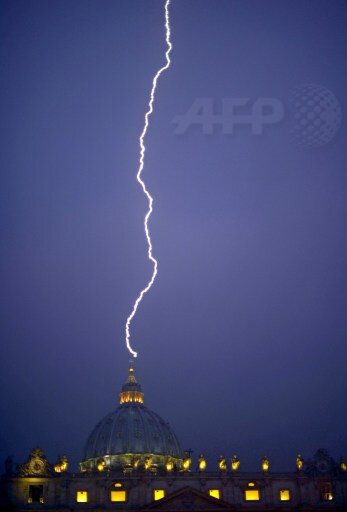 1. Opening the windows will equalize pressure so that your roof doesn't fly off.
1. Opening the windows will equalize pressure so that your roof doesn't fly off.-Don't do it! It won't help and just wastes your precious evacuation time. By the time pressure becomes an issue the winds of the tornado are so severe that it is probably already blowing shingles off the roof, breaking the windows, and throwing debris through the walls. You may see arguments to the contrary, but really, do you want to stand there debating with yourself about pressure? Or, do you skip the windows and just get you and your family to safety? 1 2
| Photo from article by Meteorologist Brent Watts |
2. Tornadoes only happen where the ground is flat. I live in a mountainous region, so I don't have to worry about tornadoes. They also do not strike in large cities or cross rivers.
- Wrong! While not as common, tornadoes have been reported in mountains and in cities! They also have no fear of water. 2 3 5
 |
| From NOAA article Overpasses and Tornado Safety |
-Do NOT do that! Ground level is not a safe place to escape a tornado. The higher you are, the stronger the winds! An overpass may offer some protection from debris, but it could also draw debris from the storm. Wind speeds can also increase under an overpass because it acts like a funnel. If you cannot outrun the tornado then you are much better off lying in a ditch and covering your head. 1 2 4 5
4. A tornado is coming, the safest place to wait it out is the southwest corner of the house.
-Not exactly... This was once thought to be the safest corner because less debris would land here. Now the safest place is thought to be the interior-most room on the lowest level of the building. The farther away from windows and exterior walls, the better; this will best protect you from debris. The lower you go the lesser the wind speeds. 2 3 4 5
5. You can always see a tornado coming.
-Wouldn't that be nice! Sometimes the rain is so heavy that you can't see the funnel cloud through the storm. Tornadoes can even cause damage before the funnel cloud has touched the ground. Have you seen pictures of a tornado hovering above ground? This doesn't always mean the tornado hasn't touched down, you just might not be able to see the air swirling at ground level. Remember, it is the dust and the debris swirling around in the air that makes a tornado visible! 3
 |
| Photograph by Ian Wittmeyer |
-Well, maybe. Turns out this is still up for debate. Seems to be that if the sky turns green a tornado may be coming. This may occur when green hail clouds accompany the storm, or maybe the red light from a setting sun reflects off blue clouds... though I could have sworn red and blue made purple... anyway, it is suggested not try to predict tornadoes based on the color of the sky, instead listen to weather and news reports, and heed all warnings! 4
I hope you have enjoyed these tornado myths. Do you know of any that I may have missed? Or, do you have any questions about tornadoes? I would love to look into it for you and get you answer!
Here are the sites I used to bring you these popular tornado misconceptions, please check them out for more information.
1NOAA - National Climatic Data Center
2TornadoProject
3The Weather Channel - Tornado: Myths
4AccuWeather - Top Five Tornado Myths Debunked
5Stormhorizon.org - Tornado Myths & Tornado Reality
Stay tuned for future posts on tornado safety tips and how to prepare for this season's storms!



